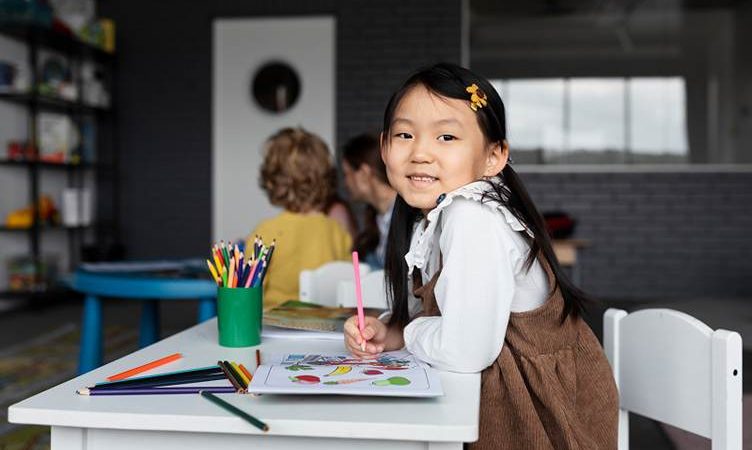Parents in Singapore continue selecting bilingual education as a critical step in preparing children for the future. Mandarin remains one of the most widely spoken languages globally and serves as a core language in many local schools. Enrolling a child in a Mandarin preschool develops linguistic skills and provides long-term academic, cultural, and social advantages.
1. Establishing Early Language Fluency
Preschool children absorb languages faster than older learners. Placing them in a preschool with a Chinese curriculum in Singapore helps build Mandarin fluency through daily use, structured lessons, and immersive activities. Teachers speak Mandarin consistently in class, supporting natural acquisition rather than passive memorisation. Children develop listening and speaking proficiency through repetition, storytelling, song, and guided play.
Regular exposure helps them pick up pronunciation accurately while forming vocabulary through context. Engaging in Mandarin from a young age allows learners to express thoughts, respond to instructions, and understand peers using the language. Mastering tonal accuracy, sentence structure, and reading characters becomes easier with early familiarity.
Children gain an advantage over their peers starting Mandarin in later years. Early fluency supports later success in bilingual academic settings. It reduces the language learning burden in primary school and helps children feel more confident communicating across settings.
2. Supporting Cognitive Development and Adaptability
Children studying in a Mandarin preschool show stronger mental flexibility. Switching between English and Mandarin regularly helps their brains process information in different formats. This constant language switching trains memory, attention, and problem-solving capacity. Cognitive research consistently links bilingualism with better executive function.
Bilingual learners manage multiple mental tasks more easily, shifting between languages based on context and audience. They perform better in planning, pattern recognition, and interpreting abstract ideas. Engaging with different writing systems—like English alphabets and Mandarin characters—trains visual discrimination and strengthens literacy awareness.
Children also develop better listening comprehension and stronger reasoning skills by understanding messages across different grammatical systems. Daily Mandarin instruction gives children early experience in decoding meaning from tone, structure, and context—skills that benefit reading comprehension and oral communication in any language.
3. Encouraging Cross-Cultural Awareness and Identity
Mandarin preschools introduce children to cultural values, customs, and history beyond language mechanics. Storytelling, festivals, calligraphy, and traditional music allow learners to appreciate the richness of Chinese heritage. They understand not only how to speak Mandarin but also when and why language use matters socially.
In a multicultural setting like Singapore, bilingual education fosters respect and curiosity toward others. Children interact with classmates from diverse backgrounds and recognise how language shapes identity and community. A preschool with a Chinese curriculum in Singapore strengthens this awareness through structured cultural immersion.
This cultural sensitivity carries forward into school years and adulthood. Students become more open-minded, adaptable, and better prepared for multicultural work or study environments. Exposure to different perspectives from an early age improves emotional intelligence and global thinking.
4. Building Confidence for Future Academic Success
Mandarin preschools give children tools that make early education smoother. Familiarity with language routines, classroom instructions, and learning materials in Mandarin ensures learners participate confidently in lessons. They follow directions, ask questions, and engage in class activities with minimal hesitation.
This confidence translates to better performance in subjects taught partially or entirely in Mandarin at the primary level. Pupils entering Mandarin-based programs without preschool exposure often struggle to keep up. In contrast, children from Mandarin preschools understand basic grammar, vocabulary, and tone distinctions.
They also build a stronger foundation for reading comprehension, written expression, and Mandarin oral exams. Over time, this foundation supports top performance in bilingual exams, language assessments, and entrance interviews that increasingly value Chinese proficiency.
The self-assurance gained through language mastery also supports social development. Confident learners express themselves more clearly and participate actively in peer interactions. They develop leadership skills, emotional expression, and cooperative play through guided Mandarin use in class.
5. Preparing for Global and Local Relevance
Mandarin remains a critical global language. China’s position in international trade, diplomacy, and technology continues to influence the need for bilingual communicators. Mandarin-speaking professionals have access to broader career opportunities and cross-border networks.
Enrolling in a preschool with a Chinese curriculum in Singapore gives children early access to this global advantage. It signals parental investment in practical, long-term learning instead of short-term results. Children growing up in Singapore already interact with Mandarin in society, media, and education. Early school exposure makes that interaction easier and more meaningful.
Language skills also support family connection and heritage preservation, especially for Chinese-speaking households. Children better understand elders, traditions, and values when they communicate confidently in Mandarin.
Explore how your child can grow confidently through bilingual learning. Schedule a tour at Orange Tree Preschool to find the right Mandarin preschool in Singapore designed for early language and cultural immersion.


